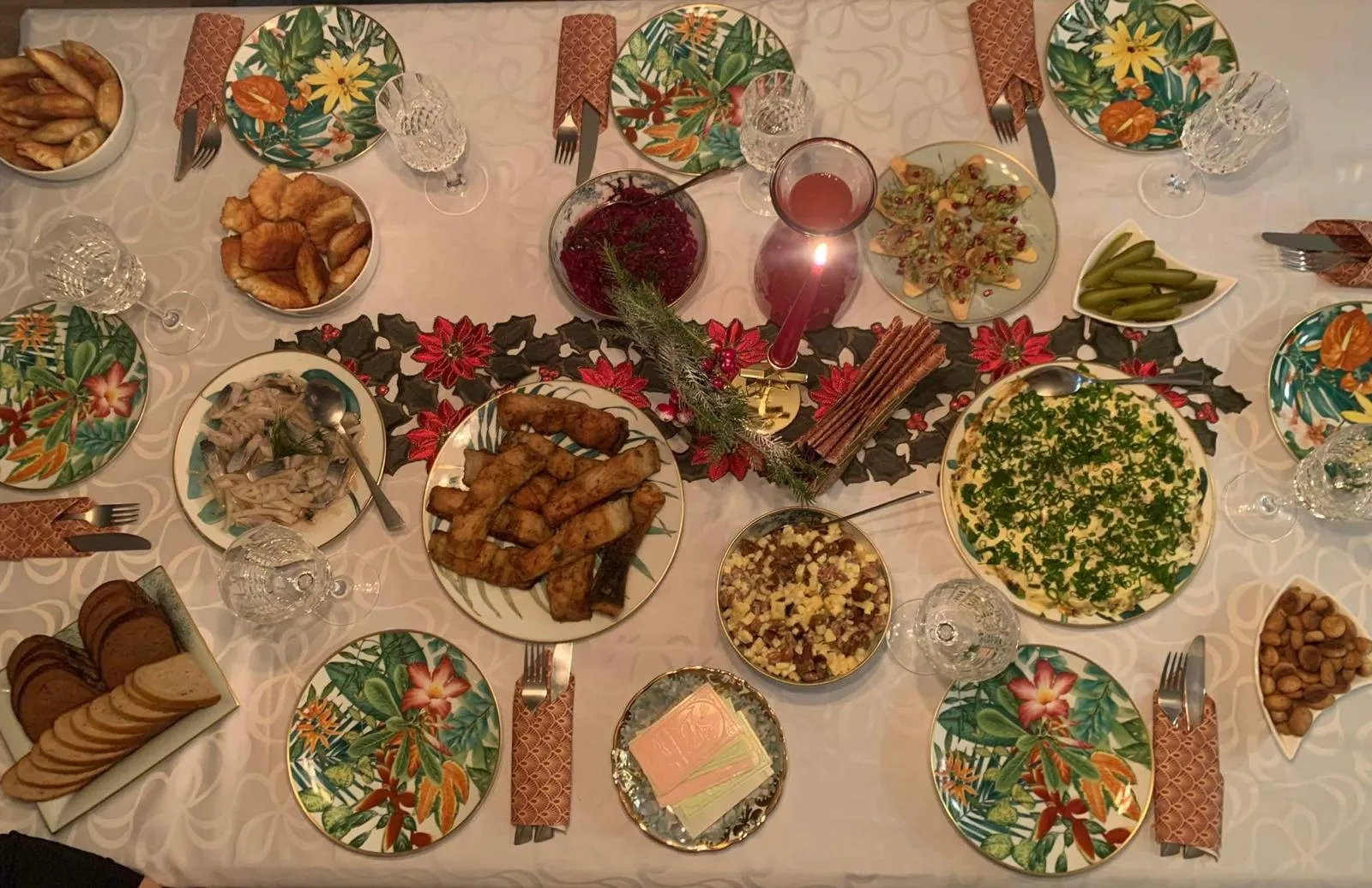Wicker Park Farmers Market: Recipes with Grocery Store Shortcuts
Discover how to create amazing meals combining fresh finds from Wicker Park Farmers Market with smart grocery store shortcuts that save time and money.


Wicker Park Farmers Market: Recipes with Grocery Store Shortcuts
The Wicker Park Farmers Market is one of Chicago's most beloved weekend destinations, offering incredible fresh produce, artisanal goods, and that quintessential farmers market experience. But here's the secret that seasoned Chicago cooks know: you don't have to buy everything at the market to create amazing farm-to-table meals. By combining select farmers market treasures with strategic grocery store shortcuts, you can enjoy the best of both worlds while keeping your budget and time in check.
Why Mix Market Fresh with Store Shortcuts?
Shopping exclusively at farmers markets can be expensive and time-consuming. While that heirloom tomato or artisanal cheese might be worth the splurge, there are smart ways to stretch your farmers market budget by supplementing with grocery store staples. This hybrid approach lets you:
- Save 30-40% on meal costs by buying pantry staples at grocery stores
- Support local farmers for the ingredients that make the biggest impact
- Reduce prep time with pre-processed grocery store items
- Enjoy seasonal variety without breaking the bank
Meet the Wicker Park Farmers Market
Located in the heart of one of Chicago's most vibrant neighborhoods, the Wicker Park Farmers Market runs Sundays from 8 AM to 2 PM (May through October) at the intersection of Damen, North, and Milwaukee. With over 30 vendors offering everything from organic vegetables to artisanal breads, it's a food lover's paradise.
Pro Shopping Tips:
- Arrive early (8-10 AM) for the best selection
- Bring cash and small bills for easier transactions
- Shop with a cooler bag during hot summer months
- Visit vendors near closing time for potential deals on remaining produce
Recipe 1: Farm Fresh Gazpacho with Store-Bought Sophistication
Buy at Farmers Market:
- 2 lbs ripe heirloom tomatoes ($8-10)
- 1 bunch fresh basil ($3)
- 1 cucumber ($2)
Buy at Jewel-Osco:
- High-quality olive oil ($4)
- Sherry vinegar ($3)
- Garlic ($1)
- Crusty bread for serving ($2)
- Optional: Manchego cheese for garnish ($5)
Total Cost: $25-30 (serves 6-8)
Preparation Method:
-
Prep the Market Stars: Core and roughly chop your farmers market tomatoes. The variety and ripeness you get from the market will create complex flavors impossible to achieve with store tomatoes.
-
Smart Shortcuts: Use store-bought garlic (saves time peeling and chopping), quality olive oil, and sherry vinegar for depth. These pantry items are often cheaper at grocery stores and don't benefit significantly from farmers market sourcing.
-
Assembly: Combine tomatoes, cucumber, torn basil, minced garlic, olive oil, and vinegar in a blender. Season with salt and pepper. Chill for 2+ hours.
-
Serving: Garnish with farmers market basil and serve with store-bought crusty bread drizzled with olive oil.
Money-Saving Tip: This gazpacho actually tastes better the next day, making it perfect for meal prep. One batch provides lunches for the week!
Recipe 2: Market Greens Salad with Grocery Store Power-Ups
Buy at Farmers Market:
- Mixed greens (arugula, lettuce, spinach) ($6-8)
- Seasonal fruit (strawberries, peaches, or pears) ($4-6)
- Fresh herbs (dill, parsley, or chives) ($3)
Buy at Jewel-Osco:
- Nuts or seeds (almonds, walnuts, sunflower seeds) ($3-4)
- Dried fruits (cranberries, apricots) ($3)
- Cheese (goat cheese, feta, or blue cheese) ($4-6)
- Quality vinegar and oil for dressing ($6 total)
Total Cost: $26-33 (serves 8-10 as side salads)
Assembly Strategy:
The farmers market provides the fresh foundation - those perfectly crisp greens and seasonal fruits that truly shine when fresh. Grocery store items add protein, healthy fats, and shelf-stable components that extend the salad's nutritional value and satisfaction factor.
Quick Vinaigrette: Whisk together 1 part vinegar, 3 parts oil, a touch of honey, salt, and pepper. This basic ratio works with any vinegar-oil combination you choose.
Recipe 3: Seasonal Vegetable Pasta with Smart Substitutions
Buy at Farmers Market:
- 2 lbs seasonal vegetables (zucchini, bell peppers, eggplant in summer; butternut squash, Brussels sprouts in fall) ($8-12)
- Fresh herbs (basil, oregano, thyme) ($5-6)
Buy at Jewel-Osco:
- 1 lb pasta ($1-2)
- Parmesan cheese ($4-5)
- Olive oil ($4)
- Canned diced tomatoes ($2)
- Garlic ($1)
- Onion ($1)
Total Cost: $25-31 (serves 6-8)
Cooking Method:
-
Highlight the Market Vegetables: Roast your farmers market vegetables with olive oil, salt, and pepper at 425°F until caramelized. This technique brings out their natural sweetness and creates the dish's flavor foundation.
-
Build the Base: While vegetables roast, sauté store-bought onion and garlic in olive oil. Add canned tomatoes and simmer. These pantry staples create a rich sauce base without the premium price of farmers market tomatoes.
-
Combine and Finish: Toss cooked pasta with the tomato base, roasted market vegetables, fresh herbs, and grated Parmesan. The contrast between the sweet roasted vegetables and tangy tomato sauce creates restaurant-quality results.
Batch Cooking Tip: Make double the roasted vegetables and use leftovers for grain bowls, sandwiches, or frittatas throughout the week.
Recipe 4: Farm-Fresh Breakfast Bowl with Pantry Staples
Buy at Farmers Market:
- Fresh eggs from pasture-raised chickens ($6-8)
- Seasonal greens (spinach, kale, or chard) ($4-5)
- Cherry tomatoes or other seasonal vegetables ($4-6)
Buy at Jewel-Osco:
- Quinoa or brown rice ($3-4)
- Avocado ($2-3)
- Hot sauce or salsa ($3)
- Olive oil or butter ($3-4)
- Everything bagel seasoning ($2)
Total Cost: $24-33 (serves 4)
Preparation:
The farmers market eggs will have deeper yellow yolks and richer flavor than store eggs - perfect for a dish where eggs are the star. Cook your grain in advance (meal prep win!), sauté the greens with garlic, and top with fried or poached market eggs.
Assembly: Grain base + sautéed greens + perfectly cooked egg + sliced avocado + hot sauce + everything bagel seasoning = Instagram-worthy breakfast that fuels your day.
Recipe 5: Seasonal Fruit Crisp with Grocery Store Foundation
Buy at Farmers Market:
- 3 lbs seasonal fruit (apples, pears, berries, stone fruits) ($8-12)
Buy at Jewel-Osco:
- Oats ($2)
- Flour ($2)
- Brown sugar ($2)
- Butter ($3)
- Cinnamon and vanilla ($4 total)
- Ice cream for serving ($4)
Total Cost: $25-29 (serves 8-10)
Baking Strategy:
Farmers market fruit at peak ripeness transforms a simple crisp into something special. The natural sugars and complex flavors can't be replicated with out-of-season grocery store fruit. However, your pantry staples from the grocery store create the perfect crispy, buttery topping that complements the fruit beautifully.
Pro Tip: Make individual crisps in ramekins for portion control and easier serving. Freeze some unbaked for quick desserts later.
Smart Shopping Strategies
What to Always Buy at the Market:
- Seasonal produce at peak ripeness (tomatoes, stone fruits, berries)
- Leafy greens (they're often harvested that morning)
- Fresh herbs (significantly more flavorful than store versions)
- Eggs (from local, pasture-raised chickens)
- Specialty items you can't find elsewhere
What to Buy at Grocery Stores:
- Pantry staples (oils, vinegars, spices, dried goods)
- Proteins (unless you find great deals on market meats)
- Cheese (often more affordable with better selection)
- Bread and baked goods (unless you want artisanal varieties)
- Canned and frozen items
Timing Your Shopping:
Saturday: Hit Jewel-Osco for your pantry staples and proteins. Take advantage of weekend sales and stock up on non-perishables.
Sunday Morning: Visit Wicker Park Farmers Market early for the best selection of fresh produce and seasonal specialties.
This strategy ensures you have everything needed for the week while maximizing freshness and minimizing costs.
Maximizing Your Farmers Market Budget
Use Jewel-Osco Digital Coupons:
Before heading to the grocery store, load digital coupons onto your Jewel-Osco app. Focus on:
- Pantry staples you'll use with market produce
- Proteins to pair with seasonal vegetables
- Dairy products and cheese
- Condiments and oils
Seasonal Planning:
- Spring: Focus on asparagus, peas, and early greens at the market
- Summer: Splurge on tomatoes, stone fruits, and berries
- Fall: Invest in squashes, root vegetables, and apples
- Winter: (Market closed, but plan preserves and use frozen vegetables)
Storage Solutions:
Proper storage extends the life of your farmers market purchases:
- Store herbs like flowers in water
- Keep berries unwashed until use
- Wrap greens in slightly damp paper towels
- Use produce quickly when it's at peak ripeness
Building Your Hybrid Shopping List
Weekly Planning Template:
Monday: Plan your week's meals around what's seasonal at the market
Tuesday-Friday: Use up farmers market produce in order of perishability
Saturday: Grocery store run for pantry items and next week's staples
Sunday: Farmers market visit for fresh inspiration
Budget Breakdown for a Family of Four:
- Farmers Market: $30-40/week (focus on seasonal stars)
- Grocery Store: $80-100/week (proteins, pantry, household items)
- Total Food Budget: $110-140/week
This hybrid approach often costs the same as shopping entirely at grocery stores while dramatically improving meal quality and supporting local farmers.
Meal Prep Integration
Sunday Prep Session:
After returning from both shopping trips:
- Wash and prep all farmers market vegetables
- Cook grains in batches for the week
- Make vinaigrettes using grocery store oils and vinegars
- Prep proteins purchased at grocery stores
- Store everything properly for maximum freshness
Wednesday Refresh:
- Use up the most perishable farmers market items
- Assess what needs to be cooked soon
- Plan weekend meals around remaining produce
Community and Connection
One of the best parts about the Wicker Park Farmers Market isn't just the food - it's the community. Chat with vendors about preparation tips, ask about upcoming seasonal items, and build relationships that often lead to better prices and first access to special products.
Many vendors offer cooking advice and recipe suggestions specific to their products. These relationships enhance your cooking knowledge while supporting local agriculture.
Seasonal Recipe Adaptations
Summer Variations:
- Gazpacho with market tomatoes and peppers
- Grilled vegetable pasta with zucchini and eggplant
- Berry crisps with farmers market strawberries and blueberries
Fall Adaptations:
- Roasted butternut squash soup with grocery store cream
- Apple crisp with market apples and store-bought oats
- Root vegetable hash with market vegetables and store eggs
The Environmental and Economic Impact
This hybrid shopping approach supports local farmers while remaining economically realistic for most families. You're:
- Supporting local agriculture with targeted purchases
- Reducing food miles for the most impactful ingredients
- Maintaining budget flexibility with strategic grocery shopping
- Reducing food waste by buying only what you need when you need it
Getting Started This Weekend
Ready to try the hybrid approach? Here's your starter plan:
This Saturday at Jewel-Osco:
- Load digital coupons for pantry staples
- Buy oils, vinegars, and spices for dressings
- Stock up on grains, pasta, and proteins
- Get cheese and dairy products
This Sunday at Wicker Park Market:
- Arrive by 9 AM for best selection
- Focus on 2-3 types of seasonal produce
- Buy fresh herbs for maximum impact
- Chat with 1-2 vendors about their recommendations
Sunday Afternoon:
- Prep all produce for the week
- Make one batch recipe using both market and store ingredients
- Plan 2-3 meals using your purchases
Conclusion: Best of Both Worlds
The magic happens when you combine the peak-season perfection of farmers market produce with the convenience and affordability of grocery store staples. This approach lets you eat seasonally and support local farmers without the financial stress of shopping exclusively at premium markets.
Start small with one or two hybrid recipes, and gradually build your confidence and repertoire. Soon, you'll develop an intuitive sense of what to buy where, maximizing both flavor and value in your Chicago kitchen.
Your wallet, your taste buds, and your local farming community will all thank you for this balanced approach to seasonal eating in the city.